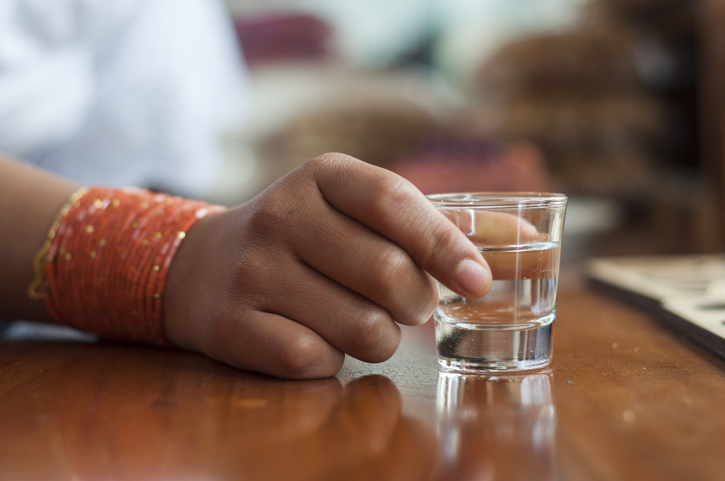It can be difficult for anyone to receive treatment for substance use disorder in the United States; however, it is even harder for minorities to get the help they need to recover. At Safe Harbor Recovery Center in Portsmouth, Virginia, we continuously work to increase the cultural competency of our staff and programming. We recognize that addiction is frequently correlated with trauma and mental illness and that there are stigmas that may make it more difficult for people who are part of a minority group to get the help they need.
Horrifying Statistics
There are several ways that minorities with substance use disorders are set up to fail, compared to their white counterparts:
- Drug policies tend to more harshly punish the behaviors of black drug users at higher rates than white drug users. An example of this is the more punitive response to crack cocaine versus powder cocaine under the Anti-Drug Abuse Act of 1986. Crack cocaine was more frequently used by Black drug users, while the powder was more frequently used by whites. This can make it more scary for Black drug users to reach out for support.
- Black drug users are more likely to be arrested for substance use than white drug users, despite similar rates of use across races.
- Around 18 percent of all people who have been identified as needing treatment actually receive it. For people who are minorities, that number is even lower. Only 8-10 percent of Black and Latino people who need treatment receive it.
- Black patients addicted to opioids are 70 percent less likely to receive buprenorphine to help them manage their condition than their white counterparts, increasing their risk for relapse. Hispanic patients receiving treatment for opioid use disorder are 25 percent less likely than white patients to receive buprenorphine. Black and Hispanic patients who do receive medication to help them manage their addiction typically receive it for a shorter time than their non-Hispanic, white counterparts, and this discrepancy grew wider between 2006 and 2020.
- Among privately insured patients who were treated in emergency rooms for overdoses, Black patients were only half as likely as non-Hispanic white patients to receive treatment afterward. Black and Hispanic patients struggling with opioid use disorder are also less likely than their white counterparts to receive naloxone, a drug that reverses overdoses from opioids until emergency medical assistance can arrive, despite minority opioid users overdosing and dying from overdose more frequently than white opioid users.
- While low-income areas with a high minority population are less likely to have available treatment options, they are far more likely to have liquor stores, which correlates with a reduced likelihood of completing outpatient treatment after inpatient treatment has finished.
- The Covid-19 pandemic disproportionately disrupted recovery and harm reduction services serving people of color, versus those for white people.
Barriers to Receiving Quality Treatment with
Researchers believe that several factors can affect access to treatment, which include:
- The person’s own financial ability to access treatment
-
- Racial makeup of their community – poorer areas that are more ethnically diverse typically offer fewer treatment opportunities for people on Medicaid than poorer areas that are mostly white.
- Attitudes about the substance used – for example, white people who become addicted to prescription opiates are seen as deserving of compassion, but Black people who are addicted to opioids are seen as criminals with moral failings. Healthcare providers are also more likely to turn away patients who use crack cocaine (a drug more commonly used among Black people) than patients who use opioids and heroin (more commonly used among white people).
- Increased travel required to obtain treatment
- Lack of transportation to treatment – this factor is more common among minority people than white people.
- Shorter stays in treatment – minorities are often likely to spend 35-44 days in treatment for every 53 days a white person spends. This reduces their chances of maintaining long-term sobriety.
What Can Be Done about the Racial Disparities in Addiction
The American Psychiatric Association has recommended:
- National legislation to address barriers to treatment and increase access
- Diversion to treatment instead of incarcerating people convicted of nonviolent drug offenses
- Ensuring that incarcerated people be given access to medication-assisted treatment
- All treatment providers implement and enforce policies to ensure equitable and accessible substance abuse treatment
The U.S. Department of Health and Human Services Office of Minority Health has also recommended:
- Incorporating cultural values of minority communities into organizational structures and treatment practices
- Engaging minority communities in program and service design and hiring diverse staff
- Addressing underlying health, social, and economic needs of participants
- Acknowledging and addressing structural barriers including poverty, racism, and access
- Simplification of funding streams
- Increased data gathering and funding
At Safe Harbor Recovery Center, our experienced clinical staff is committed to providing the highest standard of care to all of our guests, with attention to unique cultural, spiritual, and personal differences.

